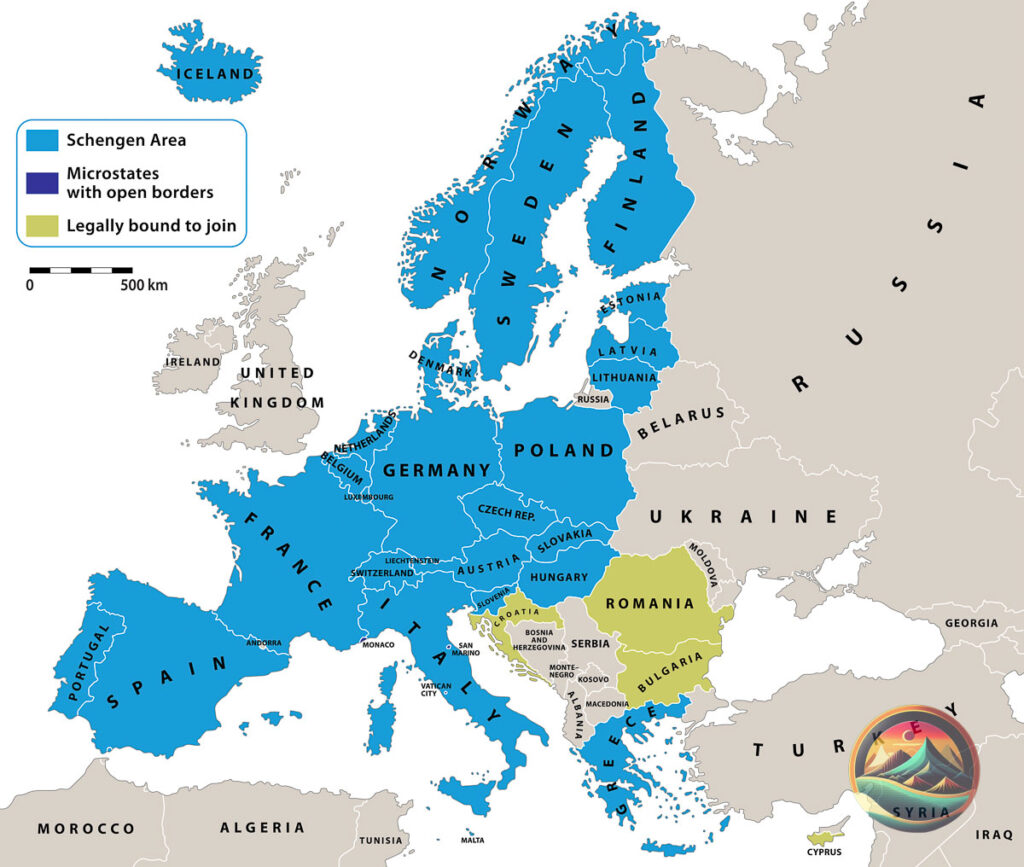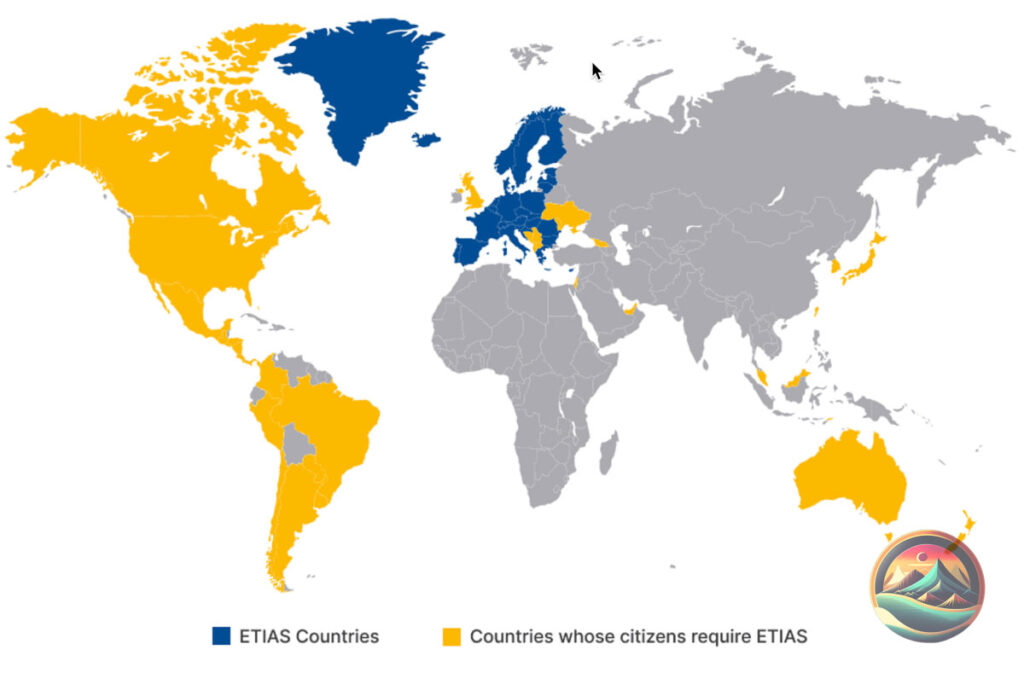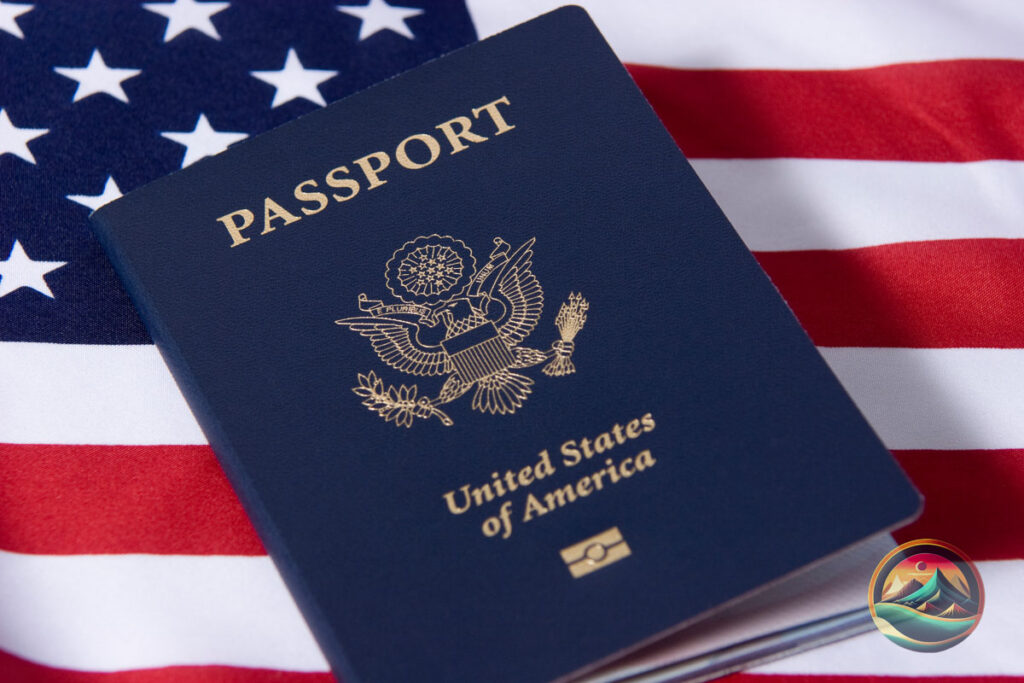
Starting in 2024, Americans planning to travel to Europe will need to obtain a visa to enter the European Union. The American passport remains strong with relatively few, or no visa requirements for Americans to enter most countries. Even though Americans are not used to having to apply for a visa to go to Europe, the process should be painless for most and relatively inexpensive. Once the process is in place, follow these required steps to obtain the new EU visa:
1. Check Eligibility:
Ensure you meet the eligibility criteria for the European Travel Information and Authorization System (ETIAS). This new system is specifically designed for travelers from visa-exempt countries, including the United States.
2. Apply for ETIAS:
Visit the official ETIAS website and complete the online application. You will need to provide personal information, passport details, travel itinerary, and answer some security-related questions.
3. Pay the Fee:
As part of the application process, you will be required to pay a processing fee. The fee can be paid online using a credit or debit card. (As of this writing, the fee is reported to be less than $8 USD).
4. Wait for Approval:
Once you’ve submitted your application and paid the fee, your information will be screened against various databases, including Interpol and Europol, to ensure security and safety. In most cases, the approval process is expected to be quick, allowing travelers to receive their ETIAS authorization via email within a few minutes or hours.
5. Travel with ETIAS:
Once you’ve received your ETIAS authorization, you’re all set to travel to Europe. The authorization will be linked electronically to your passport, eliminating the need for physical documents during your trip.
Now, let’s talk about the European Travel Information and Authorization System (ETIAS):
The ETIAS is an electronic travel authorization system introduced by the European Union to enhance security and manage the increasing number of travelers visiting the Schengen Area, which includes 26 European countries. The system aims to improve border control and reduce potential security risks while facilitating travel for legitimate visitors.
ETIAS will be mandatory for citizens from visa-exempt countries, such as the United States, who wish to enter the Schengen Area for short stays, up to 90 days within a 180-day period, for tourism, business, or transit purposes. With ETIAS, travelers will be pre-screened before their arrival, allowing authorities to identify any potential security risks in advance.
The Schengen Area is a zone comprising 26 European countries that have abolished internal borders and established a common visa policy. It allows for the free and unrestricted movement of people within its territory, effectively creating a single borderless region. The Schengen Area facilitates easy travel and encourages economic and cultural exchange among its member countries.
The Schengen Area was established through the Schengen Agreement, signed in 1985 in the Luxembourg village of Schengen, and it went into effect in 1995. The agreement aimed to foster closer cooperation among European countries to promote freedom of movement for EU citizens and to simplify travel procedures.

Countries in the Schengen Area have done away with passport checks at their internal borders. Instead, passport control is conducted only at the external borders of the Schengen Zone. This means that once a traveler enters one of the Schengen countries, they can move freely within the entire area without the need for further passport checks. The area functions as a single territory for many practical purposes, such as transportation, tourism, and business.
It’s important to note that while most of the Schengen Area countries are members of the European Union (EU), there are some non-EU countries, like Norway, Iceland, Switzerland, and Liechtenstein, that are also part of the Schengen Agreement.
Travelers from visa-exempt countries, such as the United States, can enter the Schengen Area for short stays of up to 90 days within a 180-day period for tourism, business, or transit purposes without the need for a separate visa. However, as mentioned earlier, starting in 2024, travelers from visa-exempt countries will be required to obtain an authorization through the European Travel Information and Authorization System (ETIAS) before their trip to Europe.

The ETIAS application process will be straightforward, conducted entirely online, and is expected to be affordable and efficient. Once approved, the ETIAS authorization will be valid for multiple entries to the Schengen Area for a period of three years or until the passport’s expiration date, whichever comes first.

In conclusion, obtaining the new EU visa through ETIAS will involve a simple online application process. With ETIAS in place, Americans can continue to explore the beauty and culture of Europe with added security and ease, making their travel experiences more seamless and enjoyable.
ETIAS info at the European Union website.
Your ETIAS check-list
- Apply for an ETIAS travel authorisation well in advance – before you buy your ticket or book your accommodation
- Make sure your passport details correspond to those in your ETIAS authorisation – you will be refused boarding and entry at the border if they do not match
- Make sure your ETIAS travel authorisation is still valid
- Check how long you can stay in the European countries requiring ETIAS
- Make sure your passport is valid for three months after your intended departure from the European countries requiring ETIAS – you will be refused entry at the border if it is not (exceptions apply).



